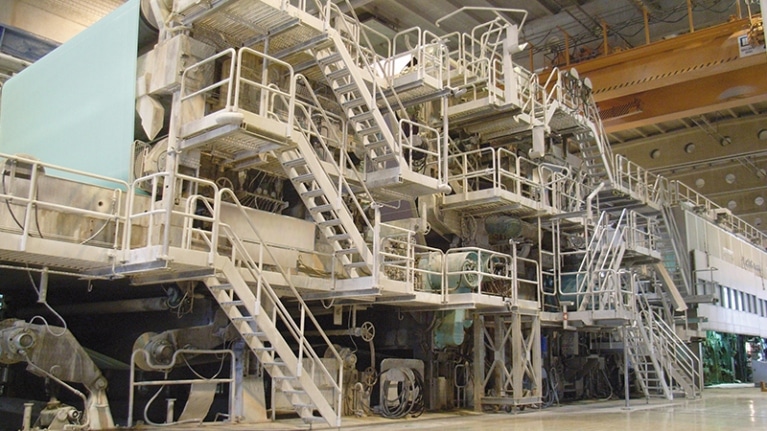
By Scott Jenkins
When a company has an emergency manufacturing problem that delays production, it needs a solution quickly—and the quicker the better.
That was the scenario when a pulp mill was faced with a time-sensitive sheet steering issue. Machine misalignment was causing a noticeable runout, yielding large amounts of useless scrap. The customer contacted PRÜFTECHNIK’s alignment team for a quick line survey of its pulp dryer in the hope that the survey would identify the root of its steering problem.
Using inertial technology to measure the parallelism of rolls
PRÜFTECHNIK responded to this rush parallel roll alignment request with PARALIGN—a unique device that uses inertial technology to measure the parallelism of rolls in production installations in the paper, print, converting, and steel industries. PARALIGN was used to provide preliminary alignment data for a collection of press section rollers, where a visible tracking issue was occurring in the pulp dryer’s wet end. A pulp dryer machine is the final stage in the pulp-making process. Its purpose is to remove moisture from bleached pulp fibers that are fed into the system as efficiently as possible at fast, consistent production rates. Water is squeezed, evaporated, and essentially cooked out of the material where it then continues downstream to be wound and sent for cutting, inspecting, and further processing.
Line operators needed to pinpoint an issue leading out of the second press/nip stack and into the flӓkt pulp dryers. During its nine-hour visit, PRÜFTECHNIK team members measured 44 rolls throughout the wet end and dryer entrance and exit.
Leveraging unique technology
The technology used to perform the alignment checks is unique to the parallel roll alignment world. Unlike traditional measurement methods, PARALIGN does not require a line of sight to measure cylinders (rollers). The device is swept across the roll surface no less than 20 degrees of the roll’s circumference. Three internally comprised high-precision ring-laser gyroscopes gather a roll’s position in space by identifying its roll, pitch and yaw coordinates. The rotational coordinates are then translated into arc angles as a function of the bearing-to-bearing cylinder lengths to produce horizontal and vertical offsets.
These data are transmitted via Bluetooth to PARALIGN’s editor software into an easy-to-read graphical format for analysis. In the software, the cylinders’ center axes can then be compared to each other using a designated center axis as the reference roll.
Identifying the problem, getting back to business
Using PARALIGN, line operators were able to identify the problem rollers that were contributing to misalignment when feeding out of the press section into and throughout the dryer turning rolls. Correcting those rolls enabled the pulp mill to reduce waste and downtime while ultimately creating a positive impact on material production.
Providing a single source for solutions in the industrial manufacturing business means having the resources and dedicated team members to respond swiftly to last-minute reactive maintenance requests. That—and innovative technology such as PARALIGN—were the keys to success in this rush parallel roll alignment request.
Scott Jenkins is a Prüftechnik Sales & Application Engineer for Fluke Reliability.
